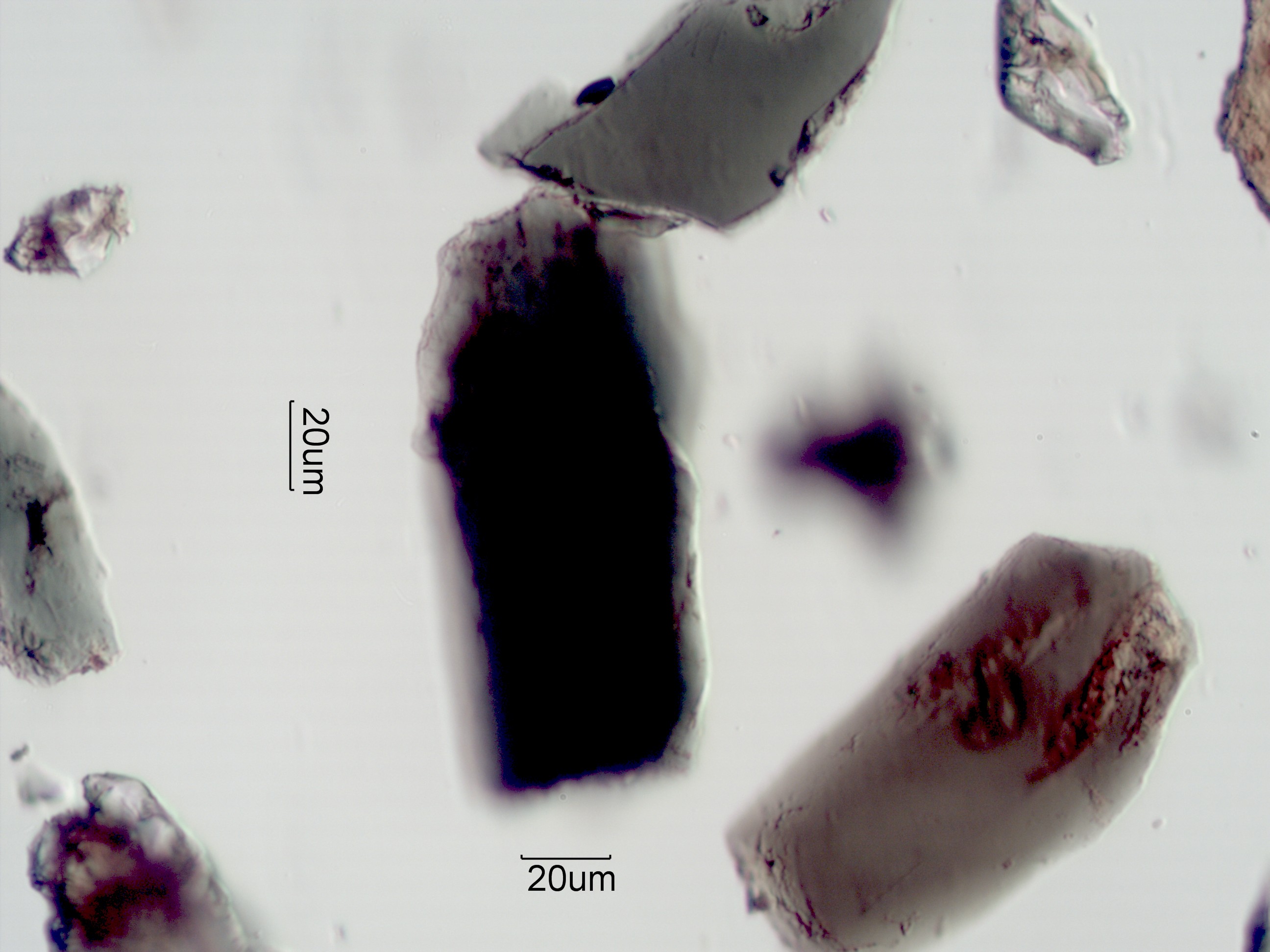Hornblende
This hornblende is from Lake Poway Park in Southern California. This hornblende is dramatically pleochroic. If a single linear polarizing filter is oriented with the vibration direction at right angles to the long axis of the grain then the grain is nearly colorless. If the polarizer in oriented with the vibration direction paralled to the long axis, as is the case here, the grain is very dark green.
Transmitted Single Linear Polarized Light Oriented North-South
Na0-1Ca2(Mg,Fe3-5Al2-0) [(Si6-7Al2-1)O22](OH,F)2. It is a very common mineral in plutonic igneous and metamorphic rocks and sediments from those rocks.
Definition/Function:
Hornblende is an amphibole series with the general chemical composition indicated asNa0-1Ca2(Mg,Fe3-5Al2-0) [(Si6-7Al2-1)O22](OH,F)2. It is a very common mineral in plutonic igneous and metamorphic rocks and sediments from those rocks.


